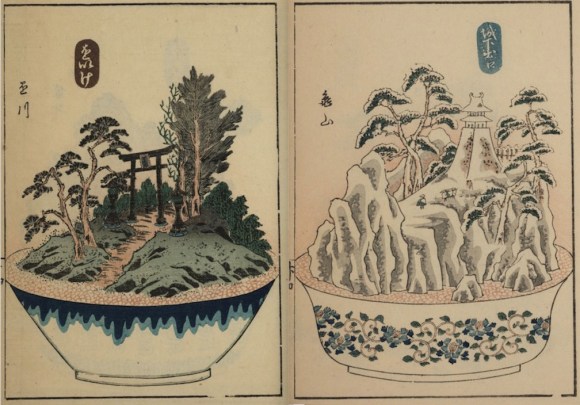
The Tōkaidō is perhaps the most important road in Japan’s history. Built in the 17th century, it connected the country’s two powerhouses: it runs from Kyoto, the imperial capital, to Edo (now Tokyo), the seat of the Shogunate. As well as being an important political and trade route, depictions of the Tōkaidō in art in literature were abundant and popular.
The best-known of these is Utagawa Hiroshiges’s series of ukiyo-e woodcut prints, The Fifty-three Stations of the Tōkaidō. Ukiyo-e woodblock printing like this continued to flourish in Japan until the 19th century.
Less famous than Hiroshige is the relatively unknown ukiyo-e artist Utagawa Yoshishige, who produced his own prints of the 53 stations along the Tōkaido – by depicting each station in the form of a potted landscape.
Utagawa Yoshishige’s illustrations, which are dated 1848, appear to be based on actual miniature landscape models, made by the artist’s father. These bonkei (盆景) or “tray landscapes” are miniature three-dimensional depictions of landscapes in miniature. Unlike bonsai, bonkei landscapes don’t typically include living plants, but are mostly made up of dry materials like rock and paper mache.
Here we bring you a selection of our favourites, in a collection we’ll be calling “Fifty-three Ten Stations of the Tōkaidō as Potted Landscapes”.
1)
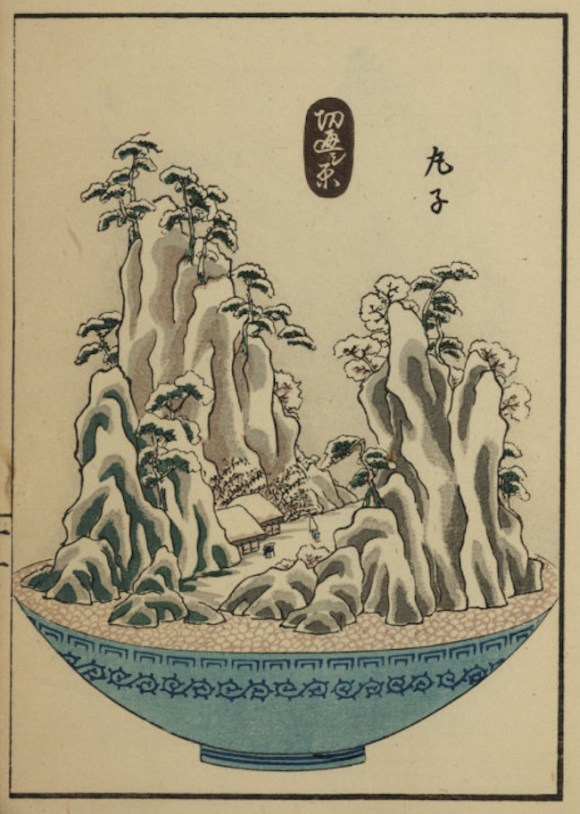
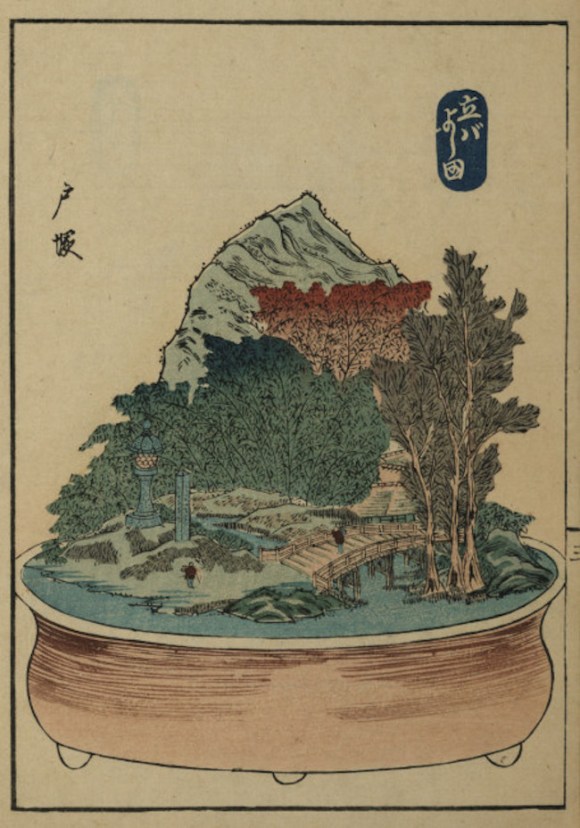
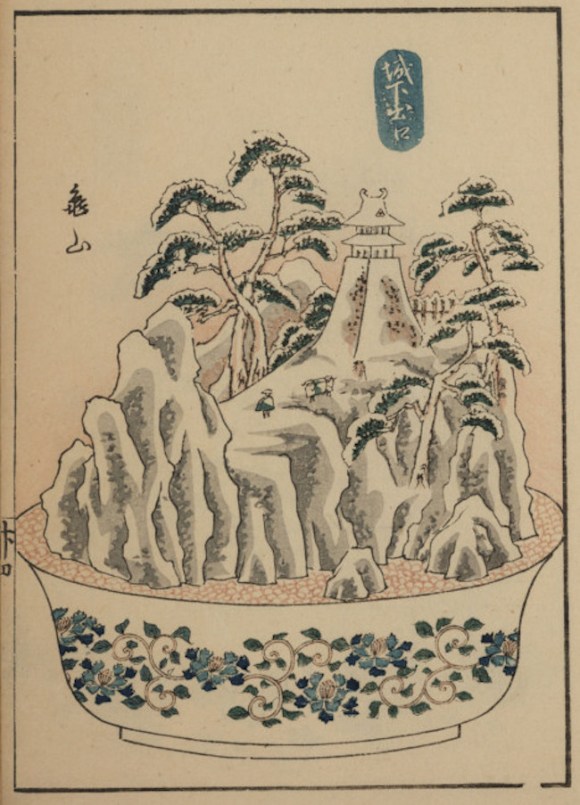

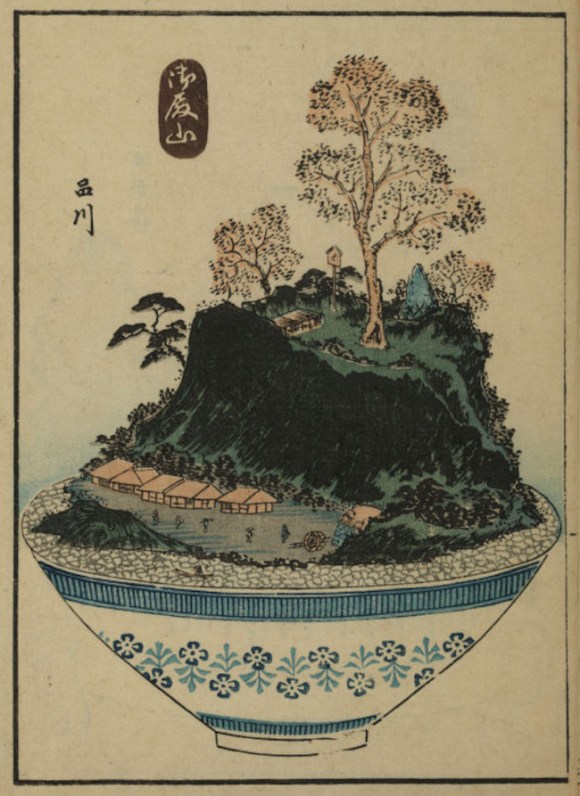
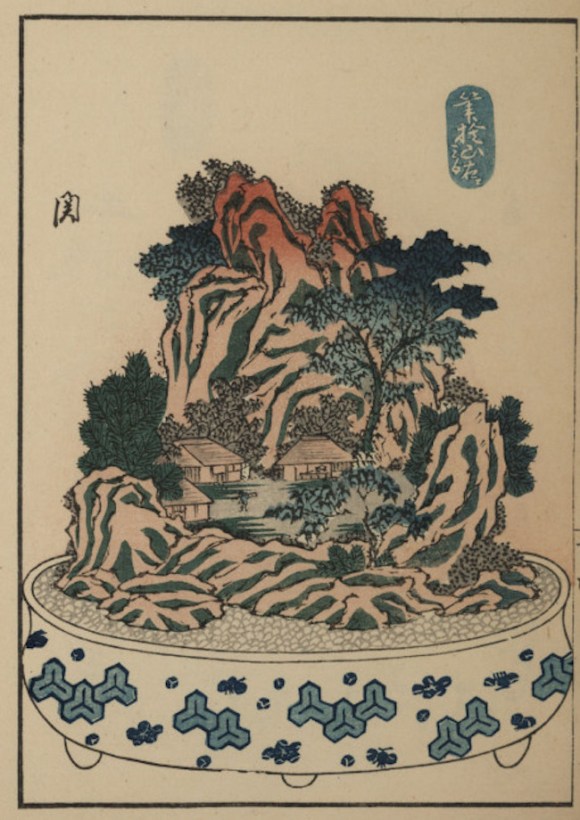
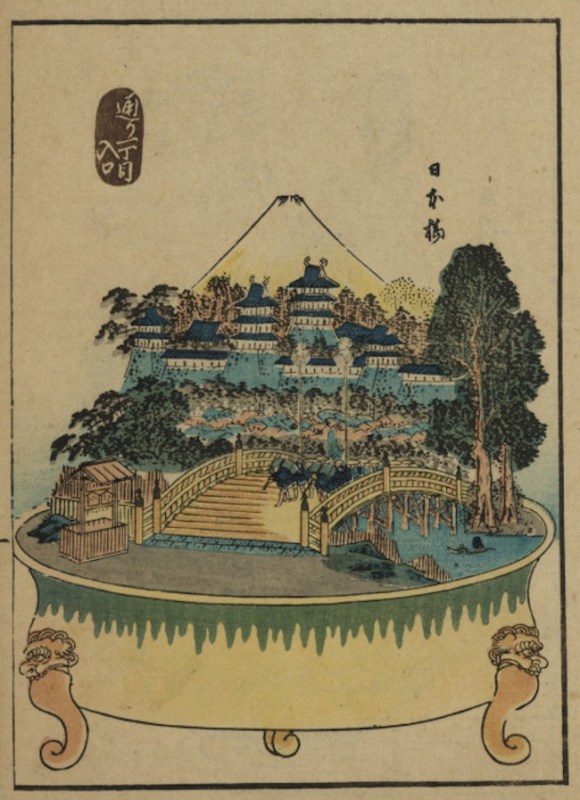
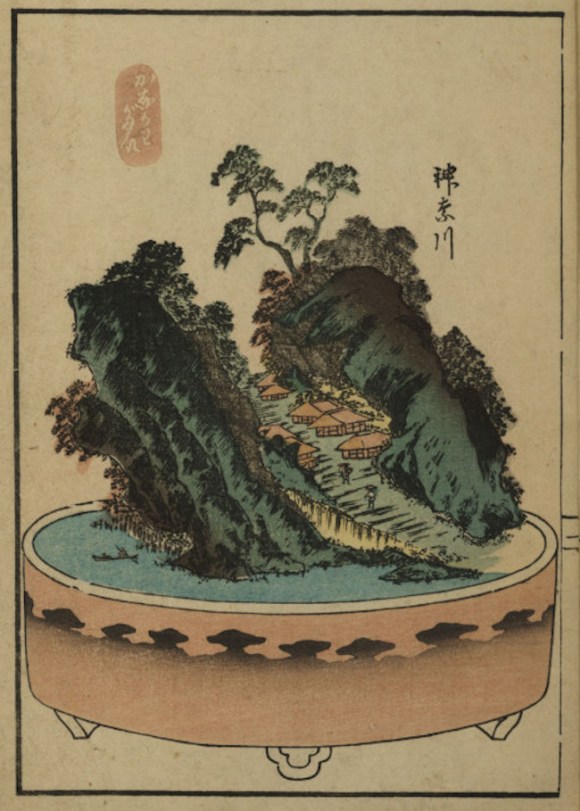
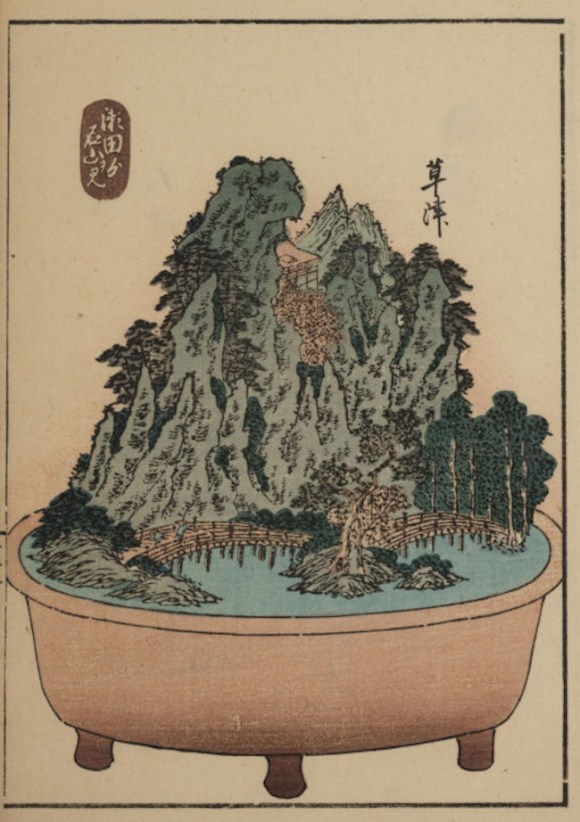
Sources: The Public Domain Review, Japaaan, US National Agricultural Library
Featured image: US National Agricultural Library, edited by RocketNews24
All images: via US National Agricultural Library

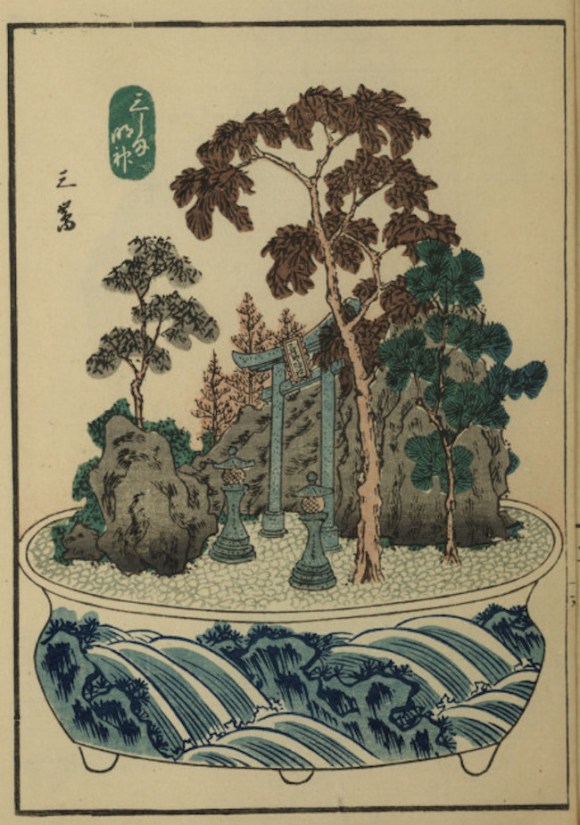
 Tokaido ukiyoe series by Hiroshige now free to share, we celebrate with five favourites
Tokaido ukiyoe series by Hiroshige now free to share, we celebrate with five favourites Adorable, whimsical pictures of animals painted by old-school Japanese masters
Adorable, whimsical pictures of animals painted by old-school Japanese masters Get your beer in artistic cans featuring work by ukiyoe master Hiroshige!
Get your beer in artistic cans featuring work by ukiyoe master Hiroshige! Own the lighter side of ukiyo-e with a zodiac chimera and weird tiger-stone items by Felissimo
Own the lighter side of ukiyo-e with a zodiac chimera and weird tiger-stone items by Felissimo Beautiful ukiyo-e woodblock print artwork appears on three of Japan’s premium beer brands
Beautiful ukiyo-e woodblock print artwork appears on three of Japan’s premium beer brands Japanese city loses residents’ personal data, which was on paper being transported on a windy day
Japanese city loses residents’ personal data, which was on paper being transported on a windy day Foreigner’s request for help in Tokyo makes us sad for the state of society
Foreigner’s request for help in Tokyo makes us sad for the state of society Should you add tartar sauce to Japanese curry rice? CoCo Ichi makes diners an unusual offer
Should you add tartar sauce to Japanese curry rice? CoCo Ichi makes diners an unusual offer Ghibli Park now selling “Grilled Frogs” from food cart in Valley of Witches
Ghibli Park now selling “Grilled Frogs” from food cart in Valley of Witches Seaside scenery, history, and so many desserts on Yokohama’s Akai Kutsu【Japan Loop Buses】
Seaside scenery, history, and so many desserts on Yokohama’s Akai Kutsu【Japan Loop Buses】 Historical figures get manga makeovers from artists of Spy x Family, My Hero Academia and more
Historical figures get manga makeovers from artists of Spy x Family, My Hero Academia and more Mt. Koya planning to instate visitor’s tax to cope with huge tourist numbers
Mt. Koya planning to instate visitor’s tax to cope with huge tourist numbers Beautiful Ghibli sealing wax kits let you create accessories and elegant letter decorations【Pics】
Beautiful Ghibli sealing wax kits let you create accessories and elegant letter decorations【Pics】 Suntory x Super Mario collaboration creates a clever way to transform into Mario【Videos】
Suntory x Super Mario collaboration creates a clever way to transform into Mario【Videos】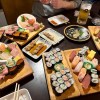 Shinjuku izakaya’s all-you-can-eat-and-drink plan is one of Tokyo’s best secret cheap eats
Shinjuku izakaya’s all-you-can-eat-and-drink plan is one of Tokyo’s best secret cheap eats McDonald’s new Happy Meals offer up cute and practical Sanrio lifestyle goods
McDonald’s new Happy Meals offer up cute and practical Sanrio lifestyle goods Japanese ramen restaurants under pressure from new yen banknotes
Japanese ramen restaurants under pressure from new yen banknotes French Fries Bread in Tokyo’s Shibuya becomes a hit on social media
French Fries Bread in Tokyo’s Shibuya becomes a hit on social media Studio Ghibli releases new action figures featuring Nausicaä of the Valley of the Wind characters
Studio Ghibli releases new action figures featuring Nausicaä of the Valley of the Wind characters New private rooms on Tokaido Shinkansen change the way we travel from Tokyo to Kyoto
New private rooms on Tokaido Shinkansen change the way we travel from Tokyo to Kyoto Red light district sushi restaurant in Tokyo shows us just how wrong we were about it
Red light district sushi restaurant in Tokyo shows us just how wrong we were about it Tokyo Tsukiji fish market site to be redeveloped with 50,000-seat stadium, hotel, shopping center
Tokyo Tsukiji fish market site to be redeveloped with 50,000-seat stadium, hotel, shopping center All-you-can-drink Starbucks and amazing views part of Tokyo’s new 170 meter-high sky lounge
All-you-can-drink Starbucks and amazing views part of Tokyo’s new 170 meter-high sky lounge Studio Ghibli releases Kiki’s Delivery Service chocolate cake pouches in Japan
Studio Ghibli releases Kiki’s Delivery Service chocolate cake pouches in Japan New definition of “Japanese whiskey” goes into effect to prevent fakes from fooling overseas buyers
New definition of “Japanese whiskey” goes into effect to prevent fakes from fooling overseas buyers Our Japanese reporter visits Costco in the U.S., finds super American and very Japanese things
Our Japanese reporter visits Costco in the U.S., finds super American and very Japanese things Studio Ghibli unveils Mother’s Day gift set that captures the love in My Neighbour Totoro
Studio Ghibli unveils Mother’s Day gift set that captures the love in My Neighbour Totoro More foreign tourists than ever before in history visited Japan last month
More foreign tourists than ever before in history visited Japan last month New Pokémon cakes let you eat your way through Pikachu and all the Eevee evolutions
New Pokémon cakes let you eat your way through Pikachu and all the Eevee evolutions Sales of Japan’s most convenient train ticket/shopping payment cards suspended indefinitely
Sales of Japan’s most convenient train ticket/shopping payment cards suspended indefinitely Sold-out Studio Ghibli desktop humidifiers are back so Totoro can help you through the dry season
Sold-out Studio Ghibli desktop humidifiers are back so Totoro can help you through the dry season Japanese government to make first change to romanization spelling rules since the 1950s
Japanese government to make first change to romanization spelling rules since the 1950s Ghibli founders Toshio Suzuki and Hayao Miyazaki contribute to Japanese whisky Totoro label design
Ghibli founders Toshio Suzuki and Hayao Miyazaki contribute to Japanese whisky Totoro label design Doraemon found buried at sea as scene from 1993 anime becomes real life【Photos】
Doraemon found buried at sea as scene from 1993 anime becomes real life【Photos】 Tokyo’s most famous Starbucks is closed
Tokyo’s most famous Starbucks is closed One Piece characters’ nationalities revealed, but fans have mixed opinions
One Piece characters’ nationalities revealed, but fans have mixed opinions We asked a Uniqlo employee what four things we should buy and their suggestions didn’t disappoint
We asked a Uniqlo employee what four things we should buy and their suggestions didn’t disappoint Princesses, fruits, and blacksmiths: Study reveals the 30 most unusual family names in Japan
Princesses, fruits, and blacksmiths: Study reveals the 30 most unusual family names in Japan “Miraculous” cloud over Mt Fuji stuns the Internet
“Miraculous” cloud over Mt Fuji stuns the Internet Young Goku gets turned into adorable limited edition ukiyoe print!
Young Goku gets turned into adorable limited edition ukiyoe print! Converse All-Stars team up with two all-stars of Japanese art for Wave, Skull ukiyo-e shoes【Pics】
Converse All-Stars team up with two all-stars of Japanese art for Wave, Skull ukiyo-e shoes【Pics】 Hachiko, Japan’s most loyal dog, finally reunited with owner in heartwarming new statue in Tokyo
Hachiko, Japan’s most loyal dog, finally reunited with owner in heartwarming new statue in Tokyo Edo and Meiji era Japanese artwork now available for free download 【Pics】
Edo and Meiji era Japanese artwork now available for free download 【Pics】 Centuries-old book of ninja secrets discovered at public library in Japan’s Aomori Prefecture
Centuries-old book of ninja secrets discovered at public library in Japan’s Aomori Prefecture Pokémon Psyduck perfectly guest stars in animated version of one of Japan’s most famous paintings
Pokémon Psyduck perfectly guest stars in animated version of one of Japan’s most famous paintings See America through the eyes of Chiura Obata, a Japanese artist from the early 1900s
See America through the eyes of Chiura Obata, a Japanese artist from the early 1900s The surprising and little-known Japanese art of gyotaku: culinary prints made with real fish
The surprising and little-known Japanese art of gyotaku: culinary prints made with real fish Wow, literature is cute! Hiroshima library designs anime mascots for decimal classifications
Wow, literature is cute! Hiroshima library designs anime mascots for decimal classifications Kabuki and geisha cats appear as cute purses based on famous Japanese ukiyo-e woodblock prints
Kabuki and geisha cats appear as cute purses based on famous Japanese ukiyo-e woodblock prints Asics Ukiyo-e x Manga sneakers combine modern and traditional Japan for Tokyo Marathon 2021
Asics Ukiyo-e x Manga sneakers combine modern and traditional Japan for Tokyo Marathon 2021 Undress an ukiyo-e woman out of her kimono with this Japanese magic towel hack
Undress an ukiyo-e woman out of her kimono with this Japanese magic towel hack Check out these super-ultra-teeny-tiny bonsai! 【Photos】
Check out these super-ultra-teeny-tiny bonsai! 【Photos】 Enjoy traditional views of Mt Fuji from your very own luxury toilet
Enjoy traditional views of Mt Fuji from your very own luxury toilet Rumi Rock’s line of edgy yukata is in pop-up shops, just in time for the summer festival season
Rumi Rock’s line of edgy yukata is in pop-up shops, just in time for the summer festival season
Leave a Reply